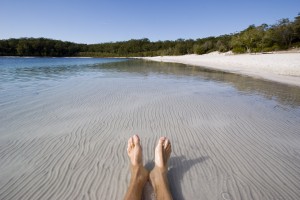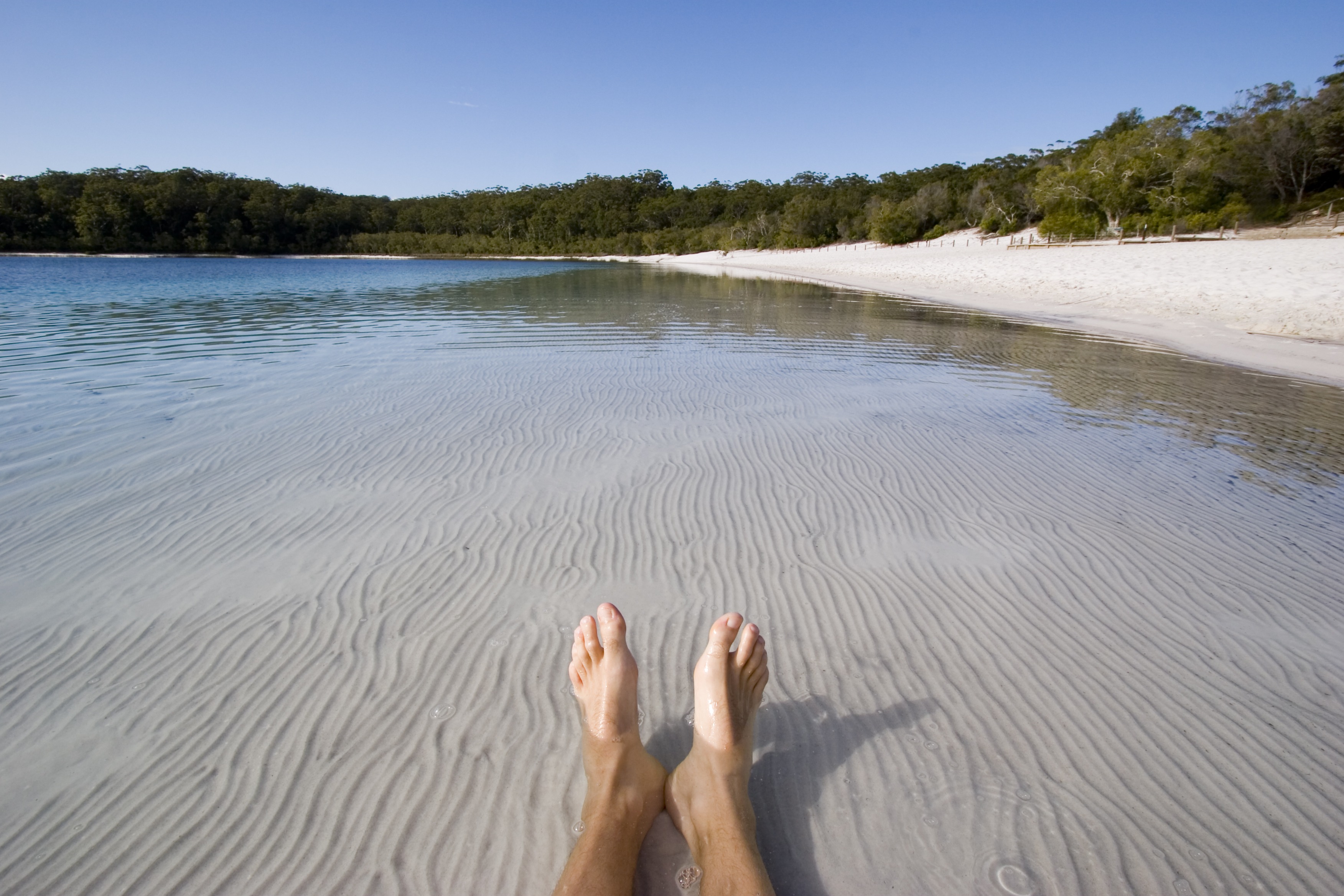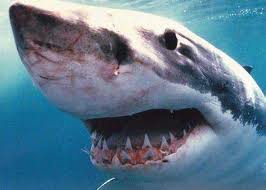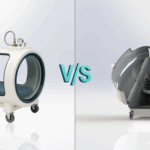Some are so poisonous they can kill you; others can cause severe pain. From bluebottles to venomous fish, these are the marine creatures you don’t want to bump into on your seaside holiday
 During summer the ocean looks so blue and inviting – but unfortunately it’s also home to a number of truly nasty creatures. An attack from their poisonous tentacles and stings could leave you seriously ill or even kill you.
During summer the ocean looks so blue and inviting – but unfortunately it’s also home to a number of truly nasty creatures. An attack from their poisonous tentacles and stings could leave you seriously ill or even kill you.
Dr Gerbus Müller, one of SA’s foremost toxicology experts, and marine biologist Cameron Ewart-Smith helped us compile this guide to venomous marine creatures – and how to treat the injuries they inflict.
Poisonous marine creatures
1. Bluebottles
A bluebottle’s tentacles contain millions of stinging cells (or nettle cells). If you come into contact with its long tendrils in the waves or on the beach, the venom bags inject poison into your skin through microscopic “needles”.
You feel a severe stinging or burning sensation accompanied by itching where the skin came into contact with a tentacle. Red, raised lesions later turn into fluid-filled blisters (these clear up within a day or two).
In extreme cases shortness of breath, nausea, headache, dizziness, an irregular heartbeat, muscle spasms and painful joints may be experienced.
What next? Rinse the affected area with lots of seawater. Don’t use fresh water (it makes the stinging cells explode) and don’t rub the area; it will only cause more irritation.
Scrape the skin with the sharp edge of a knife (or something stiff such as a credit card) to remove the remaining stinging cells. Rinse the skin with vinegar to deactivate the poison. Alcohol and human urine are also effective. Place the affected area in warm (but not boiling) water: heat breaks down the poison.
Seek medical assistance if you experience any of the following: shortness of breath, nausea, dizziness, irregular heartbeat, headache, muscular spasms, joint pains or infection.
Stings from jellyfish and red coral, equally venomous relatives of the bluebottle, can be treated the same way.
Where should you worry?
The entire South African coastline although they’re less common along the West Coast.
SAFETY UNDER WATER
Quick tips
- Buy your children modern swimsuits with sleeves and legs to protect them against bluebottles. A wetsuit top or a T-shirt over your swimsuit provides extra protection.
- Ask the lifesaver on duty about poisonous marine creatures in the area.
- Wear a pair of old takkies when bathing in a rocky area.
- Wear gloves when searching for mussels among rocks.
- Watch out for aggressive marine creatures while swimming underwater. A pair of goggles will improve your vision.
- Swim close to other people. Fish tend to avoid crowded areas.
- Make sure you know where to find the nearest doctor and hospital before you and your family set out for a day at the beach.
2. Sea urchins (Echinoidea)
The brittle spines of most sea urchins aren’t poisonous but can easily penetrate the skin. Small pieces may remain and become infected. However the long-spined sea urchin (Diadema setosum) found along our coastline is highly poisonous. It’s jet-black and has many long spines.
You feel sharp, burning pains and the affected area becomes swollen.
What next?
Place the affected area in warm (but not boiling) water to break down the poison. Use a local anaesthetic or calamine lotion to ease the burning. If you can’t remove the spines lodged in the skin get medical help. They cause bumps that have to be surgically removed.
Where should you worry?
Everywhere along our coastline.
3. Sea sponges (Porifera)
The needle-like spines on the surface of sea sponges can cause skin irritation if you rub against them.
You may be stuck with a reddish, itchy rash for a few weeks.
What next? Apply calamine lotion. See a doctor if the itching doesn’t stop.
Where should you worry?
Sea sponges are found in many places along our coastline.
4. Poisonous fish
Some fish such as stingrays, rockfish (Scorpaenidae) including stonefish, devil firefish (Pterois volitans), rabbitfish (Siganidae) and red steenbras use sharp spines and fins to administer their poisons. Most of these fish are well camouflaged and quite passive and some live on the seabed. If you tread on one it releases its poison; pieces of spine can also break off in the skin. The short, thick poisonous spines of the stonefish can sometimes even penetrate the sole of a shoe.
The liver of the red steenbras is poisonous. It’s not usually lethal but will cause nausea and stomach cramps if eaten.
You feel a sharp, throbbing pain that can last for hours. Wounds often bleed profusely. In extreme cases nausea, stomach ache, sweating, muscle weakness, fever and convulsions (especially in the case of stonefish) may follow immediately after the injury.
What next? Rinse the injured area with lots of seawater then place it in warm water (45-50 degrees Celsius) for 30 to 90 minutes – or until the pain subsides – so the heat can break down the poison. If you experience nausea, muscular weakness, stomach ache or convulsions you need to go to a doctor. The spines may need to be surgically removed.
Where should you worry? All along our coast. Rockfish and stonefish usually stick to shallow water around coral reefs, dense seaweed and rocky areas.
Danger
South Africa’s only poisonous sea snake, Pelamis platurus, is black with a yellow stomach and is common along the KwaZulu-Natal coast. Its venom is said to be two to 10 times more poisonous than a cobra’s. If you’re bitten get medical help urgently.
Taste great – but be careful!
The ocean is not the only place where you need to be careful of marine creatures – some can be just as dangerous on your plate. Seafood such as fish and mussels sometimes absorbs toxins that can make you very ill – you could even die.
RED-TIDE MUSSEL POISONING
Mussels, as well as other bivalve crustaceans such as oysters, clams and red bait, can cause various types of poisoning during red-tide conditions.
Red tides occur mainly along the West Coast of South Africa, usually in autumn and summer. Bivalve crustaceans ingest poisonous plankton through their filtration systems and although they don’t get ill they become extremely toxic to humans – eating them may cause paralysis or even death.
There are three types of mussel poisoning caused by toxic plankton and eating them can lead to …
- Paralysis
- Diarrhoea
- Breathing problems.
Thank goodness! Abalone, periwinkles, crayfish and fish don’t absorb these toxins.
Did you know? The poison isn’t broken down when mussels are cooked. After a red tide it takes four months before the mussels in a particular area are edible again. Always check with the Red Tide Alert Desk in Cape Town (021-434-4457). There are no external signs that show a mussel has been contaminated.
1. Red-tide mussel poisoning that causes paralysis
(most common) If you eat bivalve crustaceans contaminated with poisonous plankton you may get mussel-poisoning paralysis.
What are the symptoms?
You start feeling ill within half an hour to two hours after eating contaminated mussels. A tingling sensation or numbness starts around your mouth and usually spreads to the rest of your face and neck. Your fingertips and toes start to tingle. Headache, dizziness, a floating sensation, impaired vision and heaviness of the arms and legs follow. In serious cases your muscles become paralysed and you struggle to breathe. Breathing problems can cause death within two to 24 hours after eating the contaminated food.
How do you treat it?
In milder cases symptoms may clear up within 36 to 48 hours. Doctors can treat only the symptoms as there’s no effective cure. If you experience difficulty breathing they will support your breathing with a respirator if necessary.
Red light
Two to three contaminated mussels are enough to kill you.
2. Red-tide mussel poisoning that causes diarrhoea
Mussel poisoning leading to diarrhoea is caused by a toxin secreted by Dinophysis, a phytoplankton species.
What are the symptoms?
You start feeling nauseous and develop diarrhoea within four hours of eating the contaminated mussels. You experience stomach ache and possibly cold shivers.
How do you treat it?
There’s a good chance you’ll recover spontaneously within two days. Drink enough water to prevent dehydration. Treatment is symptomatic and aims to alleviate nausea, diarrhoea, stomach ache and cold shivers.
3. Air poisoning: The ‘aerosol’ red tide
A certain kind of phytoplankton, the Gymnodinium species, produces a neurotoxin that disperses into the air and can be inhaled by swimmers and surfers. It’s best not to swim when there’s a red tide.
What are the symptoms?
Your eyes, nose and throat become irritated. You start coughing and sneezing and you struggle to breathe. In some cases the toxin may cause an asthma attack.
How do you treat it?
Doctors treat the eye, nose and throat irritations to alleviate discomfort and support your breathing. Asthma is treated with a bronchodilator pump and cortisone may be necessary.
Fish poisoning
(also known as scombroid poisoning)
Popular fish such as yellowtail, tuna and mackerel can cause what is known as scombroid poisoning, due to increased histamine levels in these fish. It’s not to be confused with food poisoning from fish that’s gone off.
Although still rare, cases of scombroid poisoning have been on the increase in South Africa as well as the rest of the world over the past few years. Fish should be processed and preserved as soon as possible after being caught.
What are the symptoms?
The reaction starts with a strong peppery taste in the mouth. You may also experience a tingling sensation around your mouth and on your tongue. Within 10 minutes this is followed by hot flushes in the neck and chest area. You also become nauseous, your throat starts burning and you may experience heart palpitations.
A throbbing headache and stomach cramps are common and may be followed by diarrhoea. Asthma sufferers could develop breathing problems. Symptoms seldom continue for more than six hours. Scombroid poisoning is not deadly and in most cases not particularly severe – symptoms usually clear up spontaneously after six to 24 hours. Older people, asthma sufferers and people with heart problems may be more seriously affected.
How do you treat it?
Antihistamines are effective. Always seek medical help.
Dr Gerbus Müller’s tips
- Don’t eat fish that locals regard as potentially poisonous even if it’s a sought-after delicacy in your own fishing waters.
- Never eat shellfish harvested during a red tide.
- Don’t use contaminated fish to make stock.
- Don’t eat contaminated shellfish, even when cooked. The cooking process doesn’t destroy the toxins.
Shellfish poisoning is not the same as an allergy to shellfish
Experts warn that shellfish is one of the foods that causes most life-threatening allergic reactions. General symptoms include skin, stomach and breathing problems. Antihistamines are usually effective. (Visit our Diet & Food section for more information about seafood allergies.)
There are more friendly fish in the sea . . .
Don’t let bluebottles and sea urchins stop you from enjoying the wonders of the ocean. Many parts of the South African coastline, especially KwaZulu-Natal’s North and South coasts, boast abundant marine life. The area north of Sodwana has beautiful coral reefs hosting brightly coloured tropical fish – even Nemo, which is called a clown fish. Further north from Mozambique to Kenya and around the Seychelles, Mauritius and Madagascar the colourful underwater scenery is quite breathtaking.
This article was originally published in YOU Pulse Summer 2007/8.
_________________________________________________________________________
Have you ever suffered from any of the above? Share your story
__________________________________________________________________________








Leave a Reply